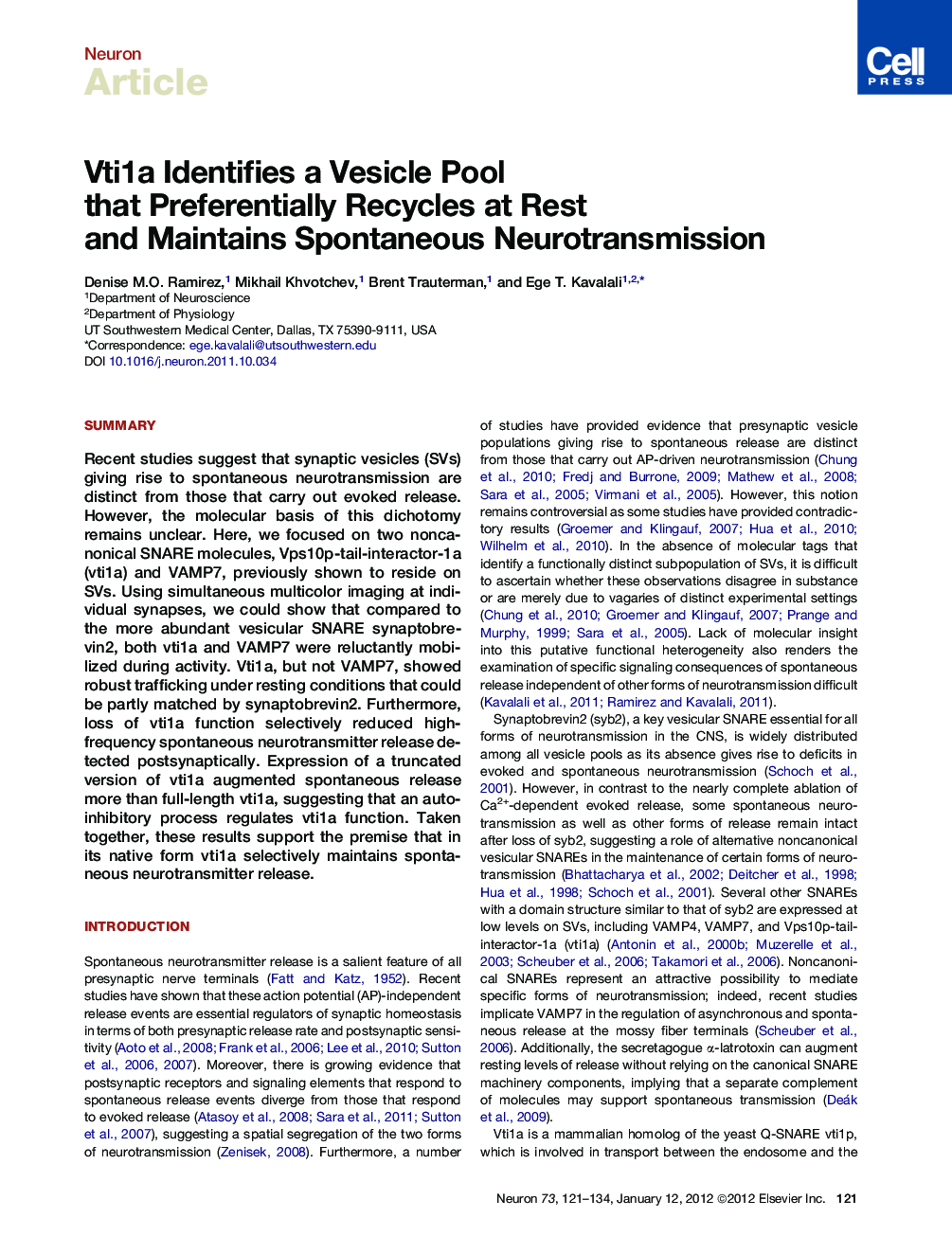| کد مقاله | کد نشریه | سال انتشار | مقاله انگلیسی | نسخه تمام متن |
|---|---|---|---|---|
| 4321516 | 1291625 | 2012 | 14 صفحه PDF | دانلود رایگان |

SummaryRecent studies suggest that synaptic vesicles (SVs) giving rise to spontaneous neurotransmission are distinct from those that carry out evoked release. However, the molecular basis of this dichotomy remains unclear. Here, we focused on two noncanonical SNARE molecules, Vps10p-tail-interactor-1a (vti1a) and VAMP7, previously shown to reside on SVs. Using simultaneous multicolor imaging at individual synapses, we could show that compared to the more abundant vesicular SNARE synaptobrevin2, both vti1a and VAMP7 were reluctantly mobilized during activity. Vti1a, but not VAMP7, showed robust trafficking under resting conditions that could be partly matched by synaptobrevin2. Furthermore, loss of vti1a function selectively reduced high-frequency spontaneous neurotransmitter release detected postsynaptically. Expression of a truncated version of vti1a augmented spontaneous release more than full-length vti1a, suggesting that an autoinhibitory process regulates vti1a function. Taken together, these results support the premise that in its native form vti1a selectively maintains spontaneous neurotransmitter release.
► Synaptic vesicles containing vti1a or VAMP7 reluctantly fuse during activity
► vti1a-containing vesicles exhibit robust trafficking at rest
► syb2 and vti1a partition into distinct vesicle pools at individual synapses
► vti1a encodes a rate-limiting step in spontaneous neurotransmission
Journal: - Volume 73, Issue 1, 12 January 2012, Pages 121–134